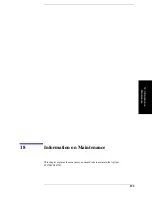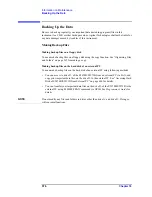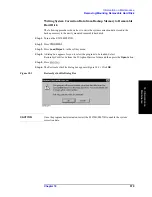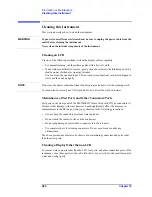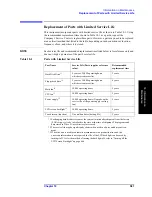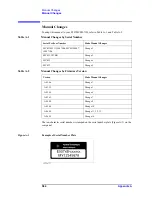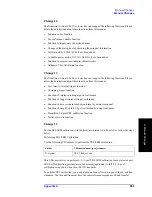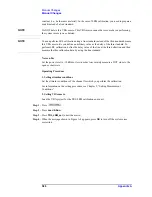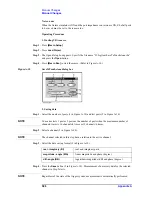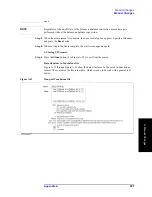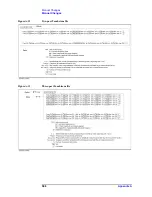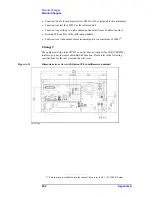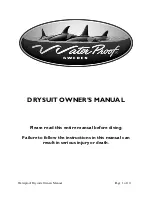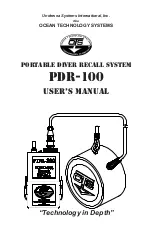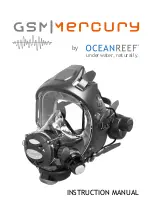
586
Appendix A
Manual Changes
Manual Changes
constant (i.e., be the same material). In the case of LRM calibration, you need to prepare a
match instead of a line standard.
NOTE
Do NOT delete this VBA macro. This VBA macro cannot be recovered even performing
the system recovery once deleted.
NOTE
You can perform LRL calibration using a line standard instead of the thru standard because
this VBA macro lets you define an arbitrary value as the delay of the thru standard. To
perform LRL calibration, define the delay value of the line at the thru definition and then
measure the thru calibration data by using the line standard.
Note on Use
Set the power level to -10 dBm or less in order to accurately measure a DUT close to the
open or short state.
Operating Procedure
1. Setting stimulus conditions
Set the stimulus conditions of the channel for which you perform the calibration.
For information on the setting procedure, see Chapter 3, “Setting Measurement
Conditions.”
2. Setting VBA macro
Load the VBA project for the TRL/LRM calibration and run it.
Step 1.
Press
.
Step 2.
Press
Load & Run.
Step 3.
Press
TRL_LRM_cal
to start the macro.
Step 4.
When the message shown in Figure A-2 appears, press
OK
to turn off the system error
correction.
Summary of Contents for E5070B
Page 6: ......
Page 30: ...24 Contents ...
Page 34: ...28 Chapter1 Precautions Before contacting us ...
Page 286: ...280 Chapter6 Data Analysis Using the Equation Editor ...
Page 430: ...424 Chapter12 Optimizing Measurements Performing a Segment by Segment Sweep segment sweep ...
Page 538: ...532 Chapter15 Measurement Examples Executing Power Calibration ...
Page 634: ...628 AppendixB Troubleshooting Warning Message ...
Page 732: ...726 AppendixD Softkey Functions Trigger Menu ...
Page 740: ...734 AppendixE General Principles of Operation Data Processing ...
Page 760: ...754 AppendixF Replacing the 8753ES with the E5070B E5071B Comparing Functions ...




